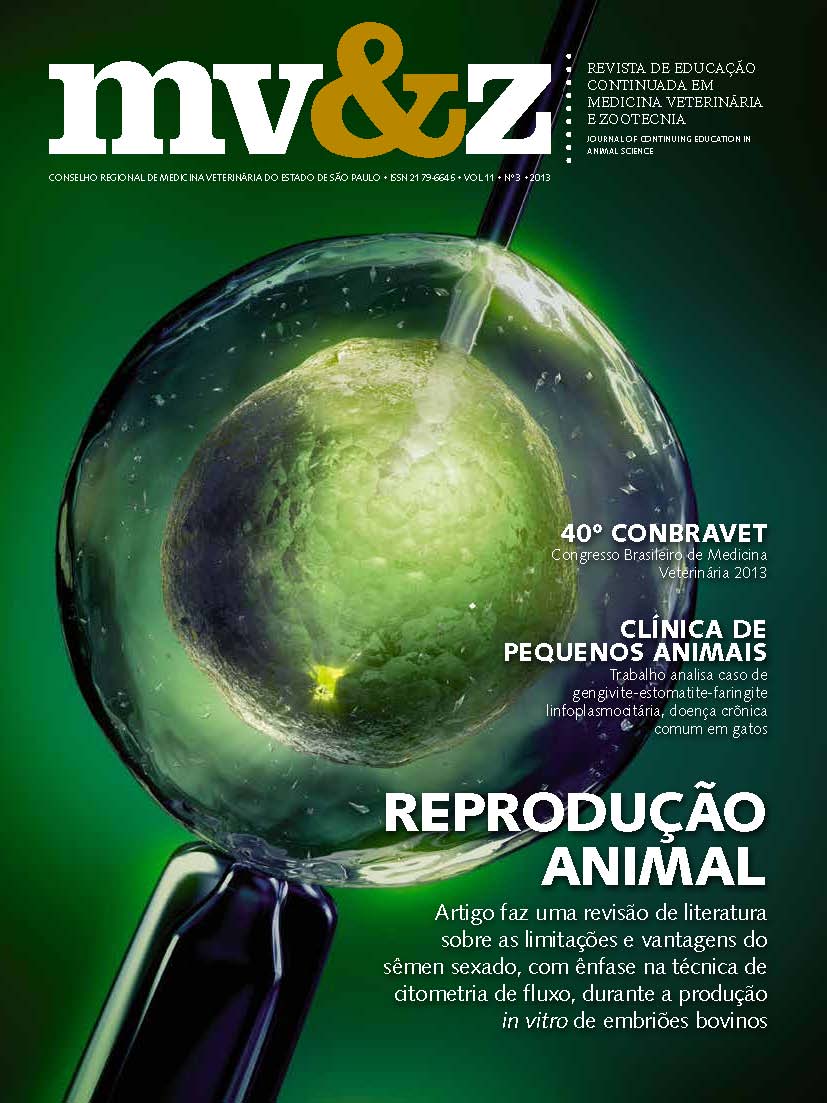Hemolysis in serum samples as a factor of pre analytical variability in the evaluation of rabies virus neutralizing antibodies by the rapid fluorescent focus inhibition test (RFFIT)
Conteúdo do artigo principal
Resumo
Among the factors that establish the pre‐analytical variability, some studies report that hemolysis is the main interferential in several tests. However, no studies were found on immunofluorescence tests or that using cell cultures. The aim of this study was to evaluate the interference of different degrees of hemolysis serum samples in the evaluation of virus neutralizing antibodies (VNA) by rapid fluorescent focus inhibition test (RFFIT). We obtained 27 blood samples from dogs vaccinated for rabies. Hemolysis was caused by mechanical induction and freezing. Hemolysated sera were classified visually and by measurement of hemoglobin made by spectrophotometry. The evaluation of VNA in the samples was performed by RFFIT. The results were statistically analyzed by the Mann‐Whitney test. Four samples and their hemolyzed aliquots were selected, added to BHK‐21 cell and maintained at 37°C for 20 hours to evaluate the interference caused by hemolysis. Sera were classified as without hemolysis (up 0.5), 1 + (0.6 to 1.0), 2 + (1.1 to 1.5), 3 + (1.6 to 2.6), 4 + (2.7 g / dL or more). The results of VNA titers showed differences when we compared the serum without hemolysis with 2 +, 3 + and 4 + however, this difference was not statistically significant (P>0.05). The reading of the results was difficult in the first dilution of sera with 2 + hemolysis by irregular cell growth, and in sera with 3 + and 4 + for the formation of clusters and cell death. It is concluded that hemolysis can interfere with antigen‐antibody or virus‐cell binding and has a high degree of interference in sera with 3 + and 4 + by lysing the cell or changing its growth pattern.
Detalhes do artigo
Seção
1. Autores mantém os direitos autorais e concedem à revista o direito de primeira publicação, com o trabalho licenciado sob a Creative Commons Atribuição-NãoComercial-SemDerivações 4.0 Internacional
2. Autores têm autorização para assumir contratos adicionais separadamente, para distribuição não-exclusica da versão do trabalho publicada nesta revista (ex.: publicar em repositório institucional ou como capítulo de livro), com reconhecimento de autoria e publicação inicial nesta revista.
3. Autores têm permissão e são estimulados a publicar e distribuir seu trabalho online (ex.: em repositórios instituicionais ou na sua página pessoal) a qualquer ponto antes ou durante o processo editorial, já que isso pode gerar alterações produtivas, bem como aumentar o impacto e a citação do trabalho publicado (Veja O Efeito do Acesso Livre);
